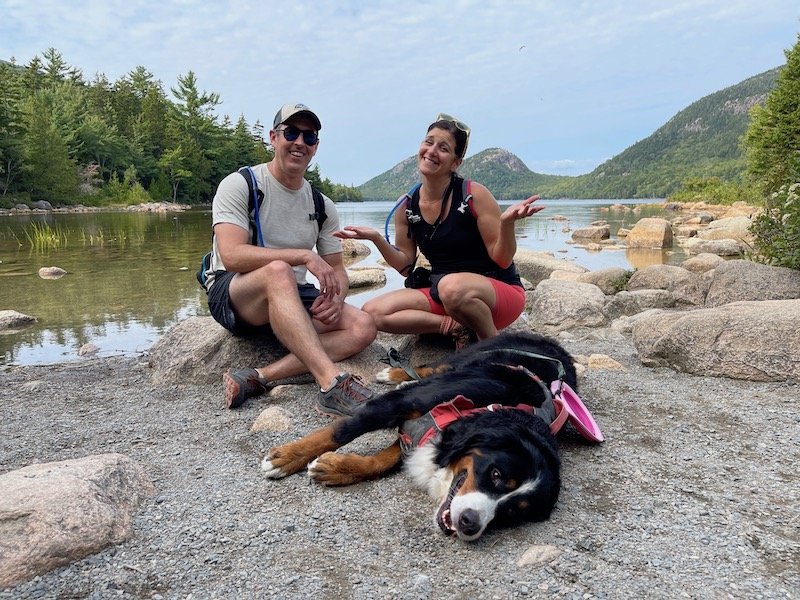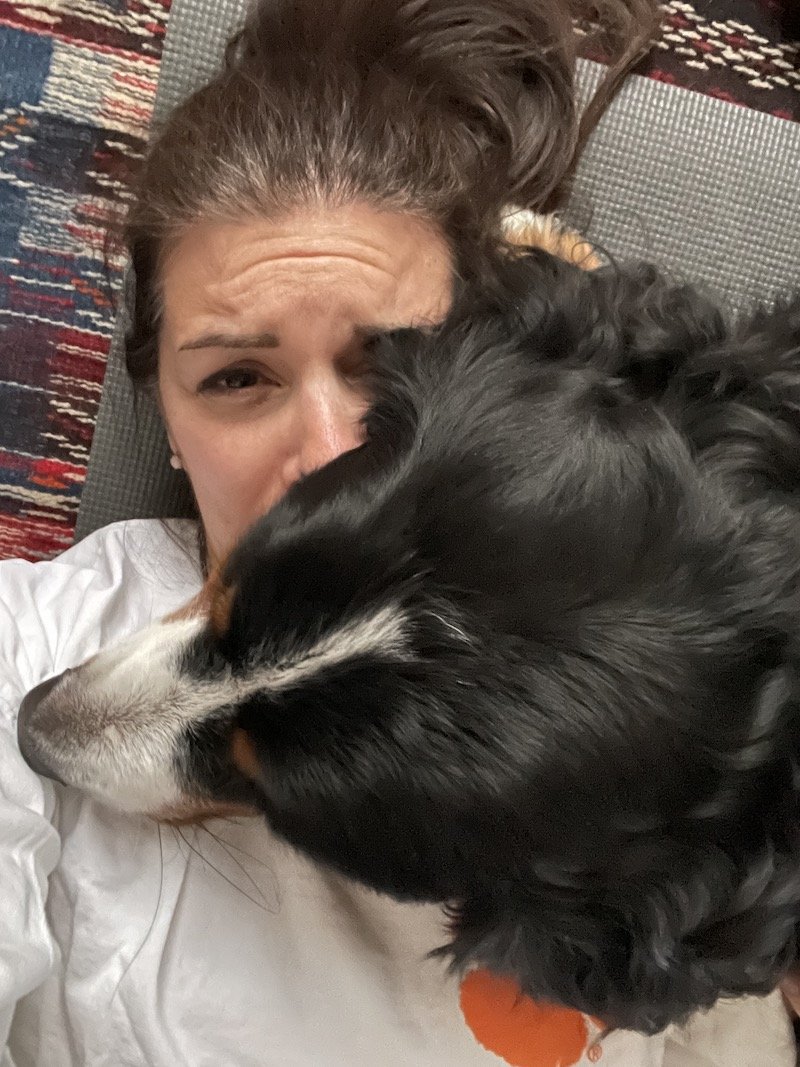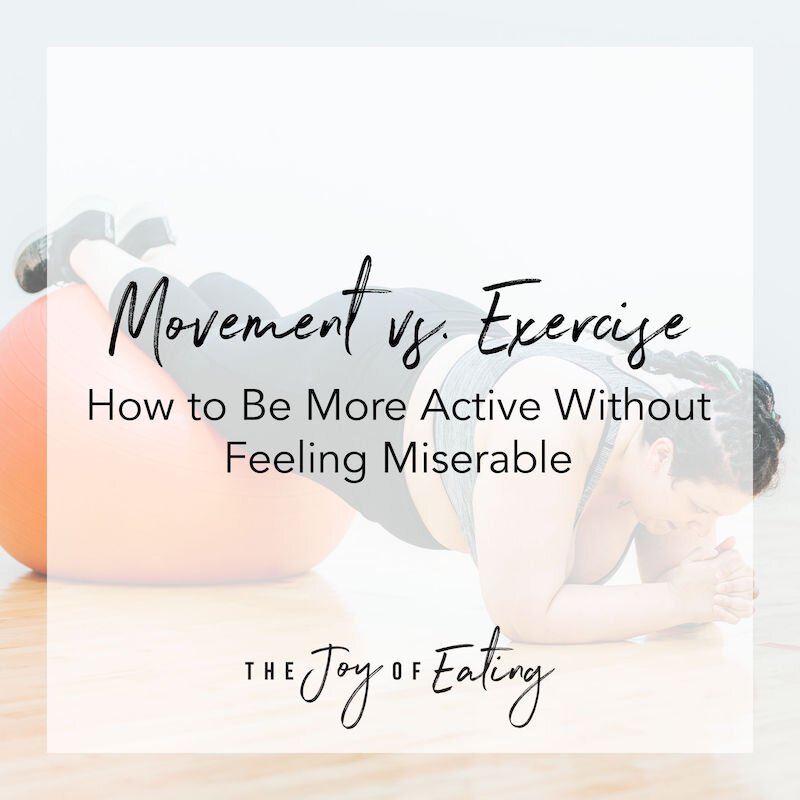Four Tips for How to Learn Intuitive Movement
Just like intuitive eating teaches you to tune into your body to help guide food choices, the practice of intuitive movement teaches you how to tune into your body to help guide physical activity choices. If you’re healing your relationship with movement, read this blog post for more support.
A neat thing about practicing intuitive eating is that as you get in touch with your body to better understand and honor it’s food needs, you start to better understand your body’s needs in other arenas as well. Whether it’s a need for rest or the need to put on a pair of socks because your feet are cold, building a sense of embodiment is a helpful tool in taking care of your body.
One of those arenas is movement. Just like there is intuitive eating, there’s intuitive movement, which is basically the same concept but applied to movement instead of food: listening to your body and its internal cues to determine what type of movement, how long, and the intensity you’d like to engage in, or whether your body is in need of rest rather than physical activity.
As I mentioned in my last blog post on movement, just like healthy eating, healthy movement looks different for everyone. We all have different physical abilities and fitness levels, likes and dislikes, time demands, fitness goals and values. We all have our own unique relationship and history with movement.
Not only that, but just like our needs for food might vary day to day, so can our movement needs. After sitting down at a desk all day, your body might be craving a good stretch. If you’re feeling that wiggly energy, perhaps you need something that gets your heart rate up, like a good run or to dance it out in your bedroom. After a night of poor sleep, your body might just be asking for rest.
Another similarity to intuitive eating? Intuitive movement is not something you decide to wake up and do one day. Building a connection with your body and understanding its needs takes time. It involves consistently checking in with your body before and during movement to recognize and respect its needs.
This blog post shares four tips we use with our clients for how to learn more intuitive movement. These are not steps, but rather ideas you can slowly integrate to help become more intuitive and embodied when engaging in physical activity.
P.S. This blog post is geared at people who are currently working at re-integrating movement back in their life, or are engaging in regular physical activity, and want to practice it is a more intuitive way. It might not be appropriate for you if your focus right now is rest, which is a 1000% OK place to be! Often healing your relationship with movement means stepping away from it for a bit. Also, while movement can a health promoting activity for physical and mental health, there’s no moral imperative for you to intentionally engage with it. If you’re someone who is currently abstaining from movement for whatever reason, this might be one to skip, especially if you’re experiencing some mixed feelings about that abstention.
Four Tips for How to Learn Intuitive Movement
Focus on pleasurable or joyful movement.
Get curious about what types of movement you enjoy, and focus on doing that. Intuitive movement doesn’t always have to be pleasurable or joyful - sometimes you might need to take your movement like you take your vitamins, for example physical therapy exercises to recover from an injury, or gentle walking that helps manage chronic pain symptoms. But for the most part, stick with activities that give you pleasure vs. activities you think you “should” be doing, especially if that “should” is rooted in calorie burning or trimming and toning.
Maybe you’re not sure what type of movement you like? This blog post on joyful movement has ideas for identifying activities you enjoy. Don't be afraid to think beyond what's considered formal exercise. Walking the dogs, hiking, dancing, riding a bike to work, chasing your kids outside, and yardwork all count (not that you need to count exercise!). If you have a complicated relationship with movement, movement as part of daily life is typically (although not always) less emotionally intense, since it’s not as connected with exercise.
For me, hiking is my most joyful form of movement. Being outside and exploring new places is just the best. Walking or jogging outside, especially in a new space, is my #2 most joyful form of movement. Ellipticals, or any repetitive cardio at the gym is my least. Which is why I don’t do it lol.
It’s also OK to experiment to see what types of activities feel good for you. Get curious and try different things and see what you like!
Aim for flexible vs. rigid structure.
When I first start working with a client on intuitive eating, we often begin by creating a flexible structure around food (i.e. making sure they’re eating enough throughout the day). Similarly, with intuitive movement, we often begin by creating a flexible structure with movement.
When most people set a movement goal, they often plan in a rigid schedule. Whether it’s signing up for classes in advance for the week, or setting goals to do a specific type of exercise, at a specific time, for a specific amount of time, it often doesn’t leave room for checking in to see what type of activity sounds good in the moment.
Scheduling exercise can be helpful for many people, especially for people with busy schedules or for blocking out time for longer activities. Like, most people don’t head to a fitness class on a whim. Plus, there’s some preparation that often goes into more structured movement, for example making sure you’ve packed your tennis shoes for after work.
I love kayaking, but it’s usually not something I can do on a whim, so I’ve got to schedule it in. Other types of movement, like walking or yoga, I can do when the mood strikes.
That said, leave in space for more intuitive movement. Whether that’s waking up a little bit early and deciding if you want to exercise, and if so, what kind sounds good to you, or planning in a 10 minute free movement break sometime in your day. Leave space for deciding what sounds pleasurable in the moment.
Connect with your body during movement.
Mindfulness and intuitive movement go hand-in-hand. Connecting with your body during movement allows you to decide whether you want to move harder and faster or gentler and slower. It helps you decide when you need a break, or if you want to keep going. Tuning in with your body lets you decide if a movement is still what you’re craving.
Listening to your body during movement helps you determine when you need rest, as Rose perfectly demonstrates here!
For example, last week I had a pretty stressful personal situation come up. I physically felt all the anxiety in my chest, and it was just itching to get out. At first, I thought I needed to go for a run and sweat out some of that stress, but after a couple blocks I realized NOPE. Increasing my heart rate was NOT IT. I felt worse. Instead, I turned my run into a leisurely walk, and stopped every so often to stretch my arms out and expand my chest - I probably looked a bit bonkers, but I felt so much better.
For more support in bringing body awareness to your intuitive movement practice, check out this blog post.
Embrace mini-movement sessions.
Part of being more intuitive with your movement means moving your body when you're in the mood for it and sometimes the itch to move strikes at inopportune times. Like, my legs might crave a run in the middle of the day when I’ve been sitting at my desk for 4 hours, but if I've got a session starting in 15 minutes, it doesn’t make sense to throw on my running shoes and go outside. Instead, I might do some jumping jacks or go up and down the stairs a few times.
Try to do five minutes of stretching after work, but Rose thought it was snuggle time…
Diet culture teaches us that in order for exercise to “count” it has to be over a certain amount of time, or that we have to break a sweat. But when you look at the physical and mental health benefits of movement, it’s clear that mini-bursts of movement (even gentle movement!) provide benefit. Embracing mini-movement sessions can even help you get more movement in, since it’s a lot easier to find the energy or time to do 5-15 minutes of physical activity versus 30 minutes plus.
The Bottom Line on Intuitive Movement
With intuitive eating, you unlearn diet cultures rules and learn to listen to both your body and your brain to help guide eating choices. With intuitive movement, you also unlearn diet cultures rules and learn to listen to both your body and your brain to help guide movement choices. Your intuition is a powerful tool in healing your relationship with movement, and learning how to move your body in a way that’s authentic to your needs. There’s no right or wrong about how often, how long, or what kinds of movement are “best.” What’s best for you is what feels good, mentally and physically. And if you’re ignoring what your body is telling you about that, it’s impossible to know.
If your relationship with movement is complicated, we love to work with clients on healing their relationship with movement as you heal your relationship with food. We work with clients throughout the US providing intuitive eating coaching, and out of our Columbia, SC office. Read more about our practice philosophy here, and reach out if you’d like additional support.
This post was originally shared Sept 2017. It has been updated to give you the best content possible.










